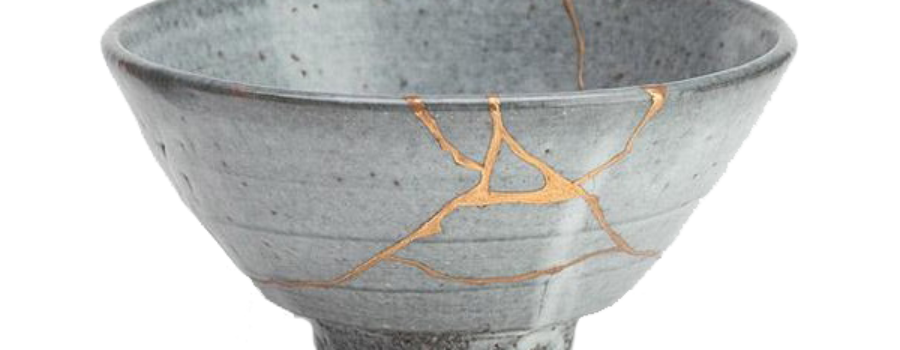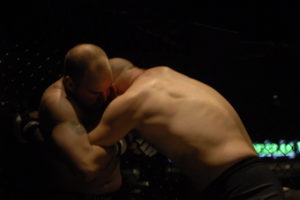I love the concept of kintsukori. Kintsukuroi is the art of putting broken pottery back together with a glue that is made with gold dust. The idea is that the pottery is more beautiful for having been broken. I have always loved this as a metaphor for us and the atonement – Christ’s atonement is the golden glue. I always hated the bruised peach, so the idea of being kintsukuroi sings to my soul.
Recently, in a conversation with a good friend, we were talking about healing from bad relationships, hurt, and the trauma inflicted by others. Often, people who hurt us don’t intend to – it is a reflection of their own trauma that they are either ignorant of or willfully disinterested in acknowledging. People who hurt often hurt as well, will blame others, or the relationship as causing them harm. So what does it mean and how do we heal while we are also pursuing relationships? I came up with a metaphor using kintsukuroi.
As singles we are always talking about ourselves and others as being broken. We are, there is no two ways about it. We also hear all the clichés about finding people whose demons play well with others, or people whose baggage matches our own. But it is all wrong. That is a snide way of saying “I won’t (or can’t) heal.” Others will try to find a way to fix the gaping hole in our hearts, unfortunately, with someone who also has a gaping hole. We can’t fill holes with more holes, we can only fill holes with something of substance. That substance is one of two things, in tandem: parts of own ourselves and the golden glue of the atonement.
Dating at our age, especially after divorce, is being kintsukuroi, but we are all in the same box, like the single’s community or just society at large. A box full of kintsukuroi: broken pottery pieces that have a lot of jagged edges. We are all scrambling to fix our pieces, we are all trying to fit the mixed pieces together and are all scrambling because we are desperate to heal. Desperate because it freakin’ hurts being broken, knowing you are broken, but knowing you don’t have to be.
In most cases, we are sorting through this box, anxious, finding pieces that look about right, but don’t quit fit. We then put those pieces back in the box blindly, still looking for ours. Or we try to make them fit, never with good results. We look for our pieces and only our pieces. But as we madly push pieces around the box, we cut ourselves on pieces that others are pushing around as well. We get cut, we get jabbed, we find people who push us out of the way as they scramble for their pieces.
Then, we find someone we like and they are looking for their pieces too – they are broken also. You now have a choice. You can keep looking for your own pieces, never looking at the piece of pottery your companion has or you each examine each other’s pottery and look for pieces together. If you choose to look for pieces on your own, and not look at your companions pottery to help them, then your relationship will never work. If you look for your pieces and your companions, but they aren’t looking for yours or refuse to let you help, the relationship will never work. You either have to find someone that wants to help you as you help them, or you sort on your own. Two people choosing to work together, having patience and trust, can heal together and have a very strong relationship in the process. If one is only concerned for their pottery and how you jab them as you look for your own (true or not), it will fail, and fail miserably.
The best groups of people are those that sort the pieces that look the same and help find the person they fit best with. This is counseling. You have someone on your side that is adept at identifying pieces you wouldn’t otherwise recognize. You need this person on your team. The best ones are the ones that can see your pottery, recognize the holes, and help find the piece that is missing because they have seen it before.
Ultimately, the final thing to do is glue it all together. You could use rubber cement. You could use Gorilla Glue or Super glue, but it will just be a piece of pottery with cracks – it doesn’t show the work, the effort, or your willingness to not only accept that you were once broken, but you are better, more valuable for it. The golden glue of the atonement gives us this. How does Christ’s sacrifice fix our broken bits? Because the atonement is about forgiveness – this includes ourselves. The golden glue is forgiving those that harm us and forgiving ourselves. If you can’t forgive yourself, you are using a low quality glue that will not be whole and stronger, can be toxic to use, and will ultimately fail to hold.
Until we can accept that we either need someone who is selfless to help us, as we are selfless to help them, we should be alone. You cannot heal and grow in a relationship alone. You can heal alone or heal together. Find that person that loves you enough to bear the cuts because the pain of sorting together will lead to the satisfaction of a beautiful self. Ultimately, it takes that healing golden glue of the love of Christ that will bind it all together. With Christ, and with someone that will hold the pieces together as it is glued, we can have peace and love in our lives again.




